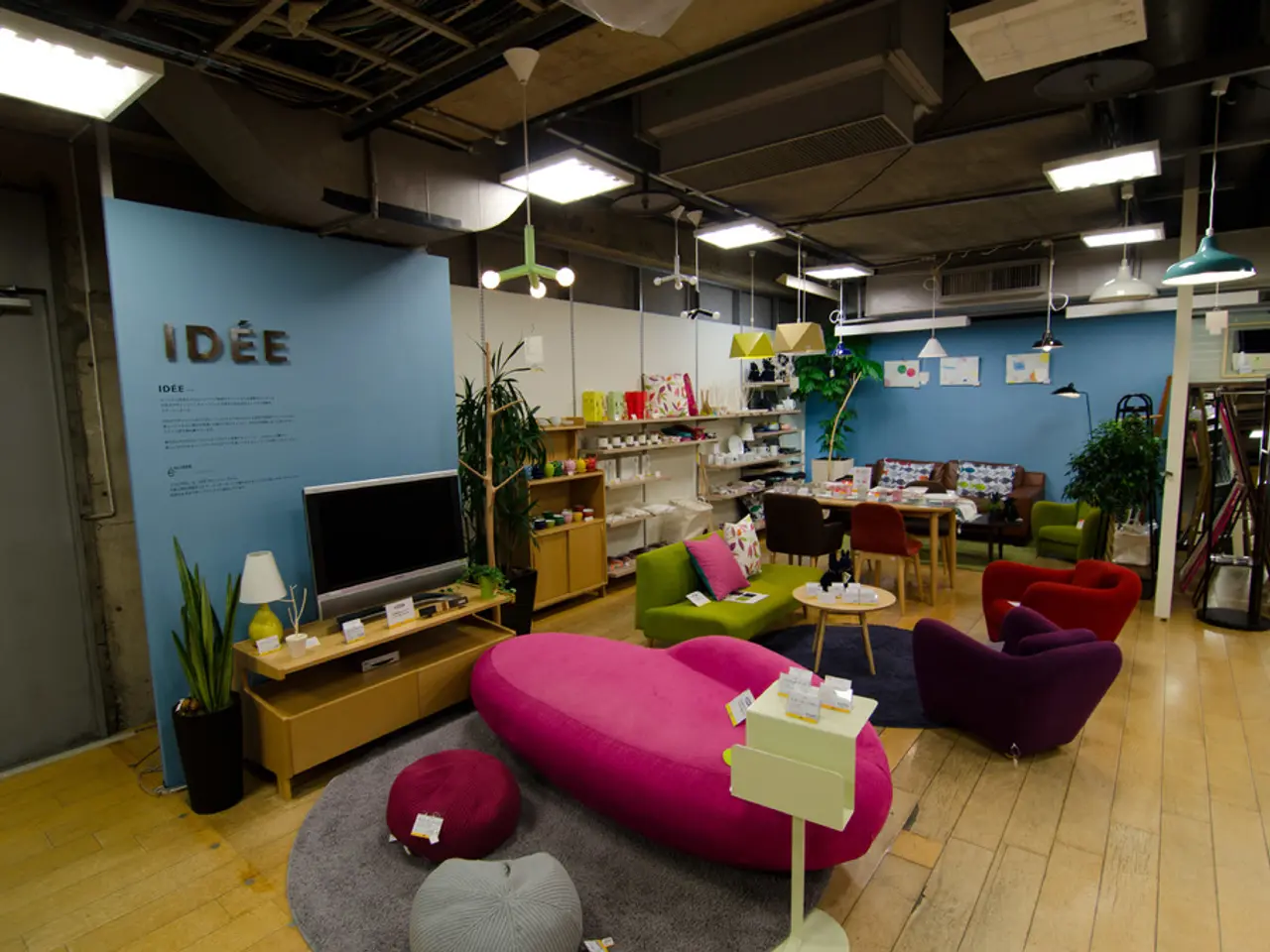Utilizing Hues to Streamline Your Domicile Arrangement
=====================================================================================
In today's fast-paced world, maintaining a well-organized home can be a challenge. However, by incorporating color into your organization strategy, you can create a more functional, visually appealing, and harmonious living space. Here's a step-by-step guide to using color for home organization.
1. Selecting a Color Scheme
Choose colors that fit the mood and function of each space. For example, calming blues or greens foster relaxation, while energizing reds, oranges, or yellows spur activity and focus. Use personal associations and memories with color to enhance connection and comfort in your space. Combine colors thoughtfully; pair neutrals with accent hues to avoid overstimulation.
2. Sorting and Storing Items by Color
Group similar items by color categories (e.g., clothes, paper types, tools). This visual cue facilitates quick identification and retrieval. Use storage containers, shelves, drawers, or baskets in consistent colors matching your scheme to reinforce organization visually.
3. Incorporating Color-Coded Labels and Storage Solutions
Employ labels with distinct colors to categorize contents clearly (e.g., red for urgent files, green for completed tasks). Select storage solutions that complement or contrast your color palette to highlight zones or item groups. Color coding reduces cognitive load by allowing your brain to locate items faster and minimizes distraction.
4. Creating Calming Environments
Use soft, muted hues like pastels or earth tones in relaxation areas (bedrooms, reading nooks) as these reduce stress and foster mental clarity. Avoid overly bright or saturated colors in calm zones so the space feels serene and uncluttered.
5. Defining Different Areas with Color
Assign distinct colors to different functional areas (e.g., blue in the study area for focus, yellow in the kitchen for energy). Use colored rugs, wall paint, or décor accents to visually separate zones, even in open-plan spaces, supporting mental organization and flow.
6. Maintaining the System Over Time
Regularly review and refresh your color-coded setup to prevent drift back into disorder. Keep labels legible and storage containers clean. Adjust colors if your preferences or needs evolve. Consistency is key: encourage all household members to follow the color system for sustained success.
By designing your space with color psychology and organization principles in harmony, you create an environment that boosts productivity, reduces stress, and supports ongoing ease of living. This approach transforms organization from a chore into a mindful, visually engaging practice that fosters calm and clarity.
In the kitchen, different colored rugs or mats can be used to designate specific areas for cooking, dining, and food preparation. As trends and personal preferences evolve, updates to the color scheme in certain rooms or areas of the home may be desired.
Incorporating color-coded rugs in the kitchen can serve to define specific areas for cooking, dining, and food preparation, emphasizing organization and function. To manifest a long-lasting, harmonious lifestyle, encourage everyone in the household to adhere steadfastly to the color system for sustained success when revising color schemes in accordance with trends or personal preferences.
With home-improvement efforts grounded in color psychology and organization principles, one can establish interiors that blend aesthetics, functionality, and efficiency, elevating home-and-garden spaces while fostering a relaxed lifestyle conducive to productivity and tranquility.




